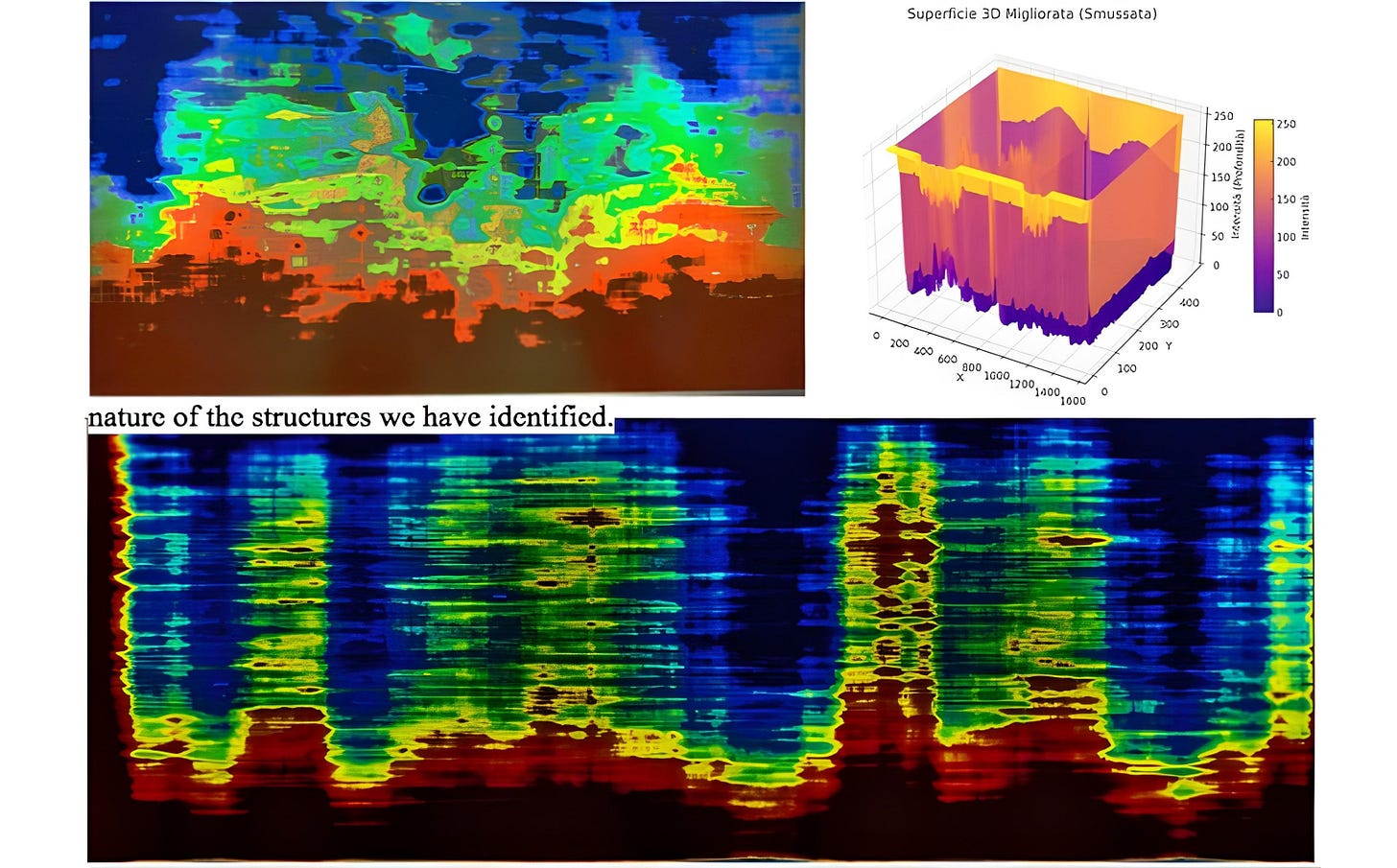This Week’s Science News from SWTG
Structures Under The Pyramids & Amazon's Quantum Breakthrough
Huge Structures Discovered Under Pyramids?
Last week, we saw some crazy news about a big underground structure that’s supposedly underneath one of the Egyptian pyramids. What’s new and what are we to make of this?
The recent news is about the three Great Pyramids in Giza in Egypt. On March 15, a group of three researchers held a press conference in Italy in which they revealed a stunning discovery. They say that they have used a new method of tomography, more about that in a minute. From this they constructed 3D models which reveal new “internal artificial structures”.
And not only this, they also found something underground.
Their images, they claim, “clearly reveal that structures exist beneath the plateau, extending below the pyramids for approximately two kilometres beneath ground level… These structures form a vast area of non-natural constructions following complex geometries.”
Concretely, they say that the structures are eight cylinders surrounded by something resembling spiral staircases. These structures “descend to a depth of 648 meters, merging into two large cubic structures measuring approximately 80 meters per side.”
Big if true, so I’ve had a look. Unfortunately there is no technical paper yet, but going by the press release and the earlier papers of the authors I have a pretty good idea what this is about.
Two of these researchers already published a paper in 2022 in which they introduced a new method to analyse structures in the pyramids. They call it Synthetic Aperture Radar Doppler Tomography which is quite a mouthful. But don’t despair, it’s not as difficult as it seems.
First of all Synthetic Aperture Radar is a widely used technique to track ground movements. Typically, it’s done by satellite, though it could also be done by drone or aircraft. You ping a radar across some terrain and track what comes back. You do this again at some other time, calculate an interference pattern between the two results, and that tells you how much the ground has moved.
The radar typically uses wavelengths in the range of 10 Gigahertz or so, so that’s millimetre waves. These are quite easily blocked by big layers of rock, which is why you have no cell phone signal in the subway. So how do they want to see inside the pyramids, and even under them?
Here is where things become interesting. They say that they can use the radar images to track vibrations of the surfaces of the pyramids and of the ground. And that these surface vibrations encode what structures there are inside.
Tomography means that you can look inside. The reason they call it a “Doppler” tomography is that the vibrations call a Doppler shift in the frequencies, so that is how they extract them.
Technically, this is correct. You can, in principle, reconstruct the inside of an object from its surface vibrations. Indeed this is used a lot by geophysicists to map out, for example, magma chambers underneath volcanoes.
So, you see both the radar method and the tomography are quite standard methods. It’s the combination that is new.
In their earlier paper from 2022 that was published in a peer reviewed journal, they said they’d used that to find structures inside the pyramids. The problem with this paper is that there is no discernible relation between the tomography images and the structures that they supposedly identified.
I mean, look at this image. On the right are their measurements, on the left you see overlaid the chamber we know is there. Alas their signal is elsewhere. They seem to have randomly identified some structures in their tomography images and ignored others.
Of course I am not the first to notice this. The 2022 paper was widely criticised and mostly ignored for this reason: They had no explanation for how they identified structures from their images.
So what’s new in 2025 is that, they say they let AI do the job. So they didn’t identify the structures. A computer did it. How do I know this? For one thing, they said this in the press conference, but also, one of the authors wrote a paper about this 2 years ago.
Keep reading with a 7-day free trial
Subscribe to Science without the gobbledygook to keep reading this post and get 7 days of free access to the full post archives.






